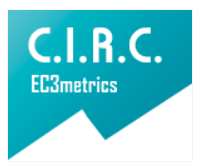Perception of the behavior of harmful oral habits users fixed orthodontic treatment
Percepción sobre el comportamiento de los hábitos orales nocivos en usuarios con tratamiento de ortodoncia fija
Main Article Content
The objective of the article was to determine which perceived harmful oral habits Audiology students at the University of Cauca, predate the start of treatment with fixed orthodontic braces, or acquired, persisted and disappeared during it. The type of study was quantitative, descriptive, cross-sectional, population universe with 40 students who were in Audiology fixed orthodontic treatment, the sample was 34 cases selected based on the inclusion criteria. The data analysis was performed using SPSS version 17 and Excel 2007. As main results, we found that unilateral chewing was harmful oral habits that most often perceived as existing students and persisted during treatment was nail biting they perceived as missing for the use of appliances and articulator distortions, they perceived as the new during treatment. It was concluded that it is necessary integral work Speech therapist and specialist in orthodontics dentist before, during and after treatment with fixed orthodontic brackets to prevent recurrence and promote the acquisition of appropriate patterns of stomatognat system function.
Downloads
Publication Facts
Reviewer profiles N/A
Author statements
Indexed in
- Academic society
- Bogotá: Corporación Universitaria Iberoamericana
- Publisher
- Bogotá: Corporación Universitaria Iberoamericana
Article Details
Agurto V., Díaz M., Rodrigo, Cádiz D., Olga, & Bobenrieth K., Fernando. (1999). Frecuencia de malos hábitos orales y su asociación con el desarrollo de anomalías dentomaxilares en niños de 3 a 6 años del área Oriente de Santiago. Revista chilena de pediatría, 70(6), 470-482. Disponible en: http://www.scielo.cl/scielo.php?script=sci_arttext&pid=S0370-41061999000600004&lng=en&tlng=es.10.4067/S0370-41061999000600004.
Cedeño, N. (2006). Prótesis orales. La intervención en Fonoaudiología. Memorias Congreso Iberoamericano de Habla y Voz. Bogotá, Colombia. Disponible en: http://www.yumpu.com/es/document/view/13452677/1-1-congreso-iberoamericano-de-habla-y-voz-bogota-colombia-
Mora, C., & López, C. (2001). Aparatología ortodoncica y trastornos del lenguaje. Revista Cubana deOdontología, 38-46. Disponible en: http://scielo.sld.cu/scielo.phpscript=sci_arttext&pid=S0034-75072007000400007&lng=es
Queiroz, I. (2002). Fundamentos en Fonoaudiología. Aspectos clínicos de la motricidad oral. Buenos Aires, Argentina: Editorial Médica Panamericana.
Rodríguez Almeida, R. de, Almeida, P. (2000). Etiologíadas más oclusoes: causas hereditárias e congénitas,adquiridas gerais, locais e proximais (hábitosbucais) RevDent Press Odont Ortop Facial.5(6):107-29.
Vargas, L. M. (1994). Sobre el concepto de percepción.Alteridades 4(8): 47-53. Disponible en: http://www.redalyc.org/articulo.oa?id=74711353004.
Zambrana, N., & Dalva, L. (1998). Logopedia y ortopediamaxilar en la rehabilitación orofacial. Barcelona. España: Masson.












